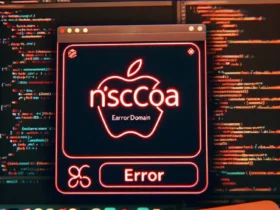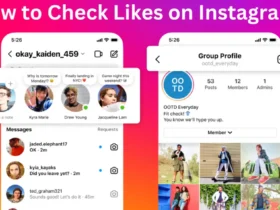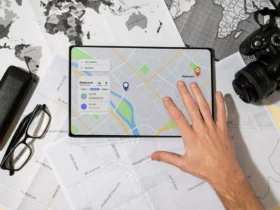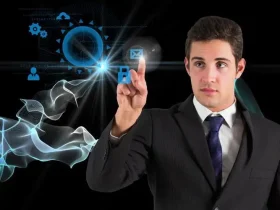8 new innovations in educational technology
It’s clear to see that the classroom is now benefiting from new innovations when it comes to technology. Below we will take a look at some new innovations that can be found in educational technology that will help to change our classrooms for the future. You can deal with writing essays at the time of study and you may ask experts from the best USA essay writing service to write a paper for you or correct one at any time.
Gamification
We all know that children learn the best when they play and this means that the latest innovations in gamification only help to make learning more enjoyable. By using gaming technology, students can grasp concepts that may have otherwise been difficult to learn. For instance, consider sites such as Mathletics which is being used in many schools to help children understand mathematical concepts.
For older students, there is the technology of virtual reality which can help these students to understand difficult skills such as surgery for a medical student or visualizing a crime scene in 3D for a student who wants to join the police.
Positives:
- Provides instant feedback
- Provides enthusiasm for learning
- Improves a students engagement
Negatives:
- Not all games are good at teaching a concept.
- Time is required to train and to use the games effectively.
Virtual Reality
Briefly mentioned above, virtual reality can be used to take students on virtual trips in the classroom setting which may not otherwise be accessible i.e. a trip to the depths of an ocean.
Positives:
- Provides an opportunity to explore things that otherwise may not be possible,
- Suits those who like to learn visually.
Negatives:
- It’s difficult to grasp spatial awareness when using virtual reality.
- Motion sickness can affect some users when using virtual reality devices.
Tablets
Many educational settings want to replace textbooks with tablets. We will outline the positives and negatives for doing this:
Positives:
- Students will not be required to carry around heavy textbooks
- Automatic digital updates mean that costs related to buying new textbooks can be avoided
- All materials will be able to be kept in a centralized place which makes them accessible for everyone
- More personalized learning can take place as specific apps can be downloaded to suit a student’s needs.
Negatives:
- To work effectively, an educational setting will need to be able to provide each student with a tablet and have a contingency in place if a tablet is lost, stolen, or damaged.
Mobile Technology
Instead of disallowing the use of mobile phones in classrooms, some educational settings are using mobile technology to their advantage and making use of apps for educational purposes.
Positives:
- Apps can help to provide a student with personalized learning
- Apps enable students to get involved in their own learning
Negatives:
- Not all parents are happy with their child having a mobile phone
- Not all students will have mobile phone access
- An educational setting will need to have every parent on board for this concept to really work effectively.
Ebooks
Our classrooms will soon use more ebooks than ever before. Research has shown that e-readers are a great way of getting those who are reluctant to read. Ultimately, this will improve literacy levels. In the UK, schools are regularly using e-books to help children to learn to read and also to encourage children to want to read.
Flipped learning
A flipped classroom or flipped learning is an idea where students are able to read notes or watch/ listen to lectures that have been sent to them prior to them attending a lesson at school or college. This, therefore, means that the time spent in the classroom will deepen the learning that students get and this learning will involve more discussion. Many educational experts believe that flipped learning makes better use of classroom time. Additionally, flipped learning provides more individual learning as students are able to look at areas that they struggle with in more detail and seek professional assistance from AdvancedWriters such as essay writer help or professional reading help if necessary.
Cloud technology
When using cloud technology a user can use services and apps on the internet instead of on a specific computer. This means information can be accessed, shared, and stored on any device that is linked to the internet. In an educational setting, a cloud can be used to share and store assignments, videos, lesson plans, and textbooks. Students will also be able to speak to their peers and lecturers via a live feed.
Positives:
- Removes the need for students to carry heavy books to and from school/college
- Easy access to a lecturer via a live feed
- Reduces the chance of homework getting lost
- Students can access information from any device that is linked to the internet
Negatives:
- Security such as hacking could be an issue, but networks on a cloud do usually have a security system to protect information.
- To work effectively, a school or college will need every student to have internet access,
Artificial intelligence
AI is being used to grade work and provide feedback to students. It can therefore help to provide students with a more personalized learning experience.
Positives:
- AI can help to give a student more information about their learning style and pattern.
- Teacher time can be saved when it comes to providing feedback and grading work.
Negatives:
- The element of personalized feedback is removed when a student receives feedback as to it’s not been provided by the teacher, as a machine has created the feedback.
- Teachers miss the chance to learn more about their students if they are not grading work as when grading work, teachers have the opportunity to learn more about their students.
It is clear to see that the advancements that have been made in technology are very impressive. Technology will continue to be a part of a student’s world and the education sector and there are many opportunities that this technology provides students. However, even with this in mind, it’s important to remember that all innovations in educational technology need to be considered carefully to ensure that it’s a positive tool that will only further enhance student learning and not a tool to remove traditional teaching and learning methods.








Leave a Reply